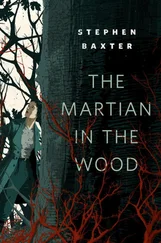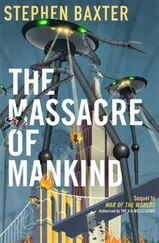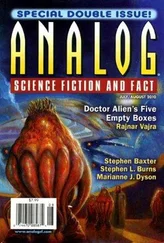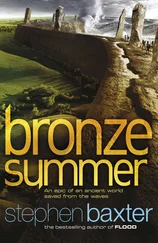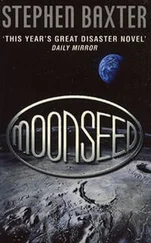The cave walls were pale rock, and the fire’s ruddy light would glimmer from the fleshy stone, casting strange and colorful shadows.
Generally the Dreamers lived as mammoths do, Longtusk observed. The adult males kept to their own society away from the females. The males seemed to spend an inordinate amount of time belching, farting and scratching their testicles. The females grunted at each other continually and watched over their cubs with a sort of irritable affection.
Once a female came into oestrus. She walked provocatively past the indolent males, who rose from their slumbers with growls of interest. A brief contest of shouting and wrestling resolved itself in favor of Stripeskull, and he took the female by the paw and led her to the back of the cave.
The coupling of these two muscle-bound creatures was noisy and spectacular. Afterward the pair of them returned to the hearth, sweating and exhilarated.
Most of the males carried pointed sticks, Longtusk saw. The biggest, strongest males — like Stripeskull — had the proudest sticks. Youngsters like Willow and old, bent, toothless adults had to make do with shorter sticks, some of them broken discards. But even the infants would toddle back and forth waving tiny sharpened branches and yelling.
The sticks were like the tusks of mammoth Bulls, Longtusk realized: not just useful tools, but weapons to be cherished and displayed.
One day Longtusk saw where the sticks came from.
At the back of the cave had been stacked some saplings, slim and straight. Stripeskull took one of these, stripped it of its branches and bark with stone scrapers, and then whittled down one end to a point with more chips of stone. Then he laid the sharpened end into the fire until it charred, and scraped it some more until it was fine and sharp.
He tested it by ramming it into animal carcasses hanging at the back of the cave. The exposure to fire, far from destroying the stick as Longtusk would have expected, had made it harder and more able to penetrate.
He realized now that he owed his life to this strange ingenuity — that and the courage of the cub, Willow.
But the Dreamers were capable of much stranger miracles than merely sharpening sticks.
Longtusk watched as Stripeskull took a nodule of creamy flint. He had gathered it from the river bank, where it had been washed down from chalk deposits upstream. Stripeskull sat near the hearth and laid around him other blocks of stone and bits of bone. Using one of the heavy stones, wrapped in his paw, Stripeskull began to chip at the flint block. Soon he was surrounded by a scattering of fine flakes — but he had turned his rough block of flint into a core shaped like a fat lemming, Longtusk thought, flat on the bottom and rounded on the top. Then he rubbed and ground the rim of the core, flattening it.
What came next seemed to demand great care. He turned the core over, finally selecting a spot. Then he cupped it in one paw, raised the leg bone of a deer in the other, and gave the core a single sharp whack.
When he lifted the flint out of his paw, he left behind a round flake, very fine, its exposed surface smooth as new ice. He inspected it critically, tapped a few flakes off its edge, and tested its sharpness by rubbing it over his leg, shaving off a small patch of fur.
Then he put it to one side, returned to his core, and continued work. When he was done, he had turned a lump of unpromising flint into half a dozen fine stone blades.
He was evidently trying to teach the cub, Willow, how to work the flint. Like a mammoth calf trying to dig out his first waterhole, Willow tried to ape Stripeskull’s actions. But his flint nodules just smashed and chipped, and Willow, frustrated, threw away the debris in disgust. The next day Stripeskull would sit with him, patiently, to try again.
After watching all this, Longtusk found a flint nodule just outside the cave mouth. Nearby he saw a scattering of broken flint flakes. He picked up the nodule in his trunk-fingers and turned it over and over. He tried to recall what he had seen, how these objects had been shaped by the ingenuity of Stripeskull. But already the memory of that mysterious magic was slipping from his mind.
Mammoths too could change the world: destroying trees, digging for water, clearing snow. But they would never learn to shape the things around them with the command of these strange, clumsy, upright Dreamers.
The Dreamers put the stones to use in every corner of their cave.
At the back of the cave hung the butchered carcasses of many animals — deer, reindeer, horse and bison — and their skins were stretched out to dry with stones and sticks. Sometimes one of the adults would scrape a skin with a slice of rock, over and over, working the skin to a supple smoothness. Longtusk marveled at the way the Dreamers’ powerful muscles worked, and the stone responded to their huge, dextrous fingers.
And there were even finer uses for the stones. All of the Dreamers used stone flakes to cut the hair that dangled from their heads, or to scrape their faces. Every few days Stripeskull himself would use one of his flint slices to scrape smooth the hair on his head. Then he would splash the raw skin with cold water, and draw lumps of ochre, bits of red and yellow rock, across his scalp to renew his gaudy coloring.
It was obvious from the powerful physique of all the Dreamers, males, females and cubs, that everybody here was expected to work hard throughout their lives. Many of them showed signs of old injury. But the old, the very young, the sick and the frail were cared for.
One small cub, though, was very sickly, much skinnier than others of its height. Longtusk saw how she had trouble feeding herself, despite her mother’s increasingly frantic assistance.
There came a day when the cub would not stir from her pallet of grass. Her mother struggled to wake her, and she even tried to suckle the cub, though her breasts were flaccid and empty of milk.
At last the mother gave up. She came to the mouth of the cave. She tipped back her great head on its low, thick neck and raised the limp body of her cub to a stormy sky.
The other females gathered close to the distressed one, comforting her with strokes and caresses. The younger cubs pulled away to the corners of the cave, wide-eyed. The adult males, awkwardly, kept away from the females — all save two of them, who began to dig a deep hole in the ground.
When the hole was done, deep and straight-edged, Stripeskull clambered into the pit with the body of the female cub. The little one had been washed, her hair shaved and tidied. The grieving mother dropped dried flowers over the body, and Stripeskull sprinkled powdered ochre, a red mist that floated gently down into the pit.
Then the Dreamers began to sing — all of them, adults and all but the smallest cubs — a strange, deep ululation that rolled endlessly like a river, smooth and sad.
Longtusk understood. These Dreamers, in their own way, were Remembering the cub, just as mammoths have always Remembered their own dead.
Longtusk saw that the walls of the grave pit, deep and sheer, were made up of complex layers of debris: rock, flint flakes, blackened ashy dust, bone splinters. Such detritus could only have been laid down by the Dreamers themselves. The Dreamers must have inhabited this cave — on this undistinguished river bank, making their unchanging hearths and tools — for generation upon generation upon generation: an unimaginably long time, reaching into their deepest past. Perhaps there were more bones buried deep here — bones a hundred thousand years deep, likewise scattered with flowers and ochre flakes — here in this trampled ground, where these strange creatures had dreamed away the unchanging millennia.
And still they sang.
Did they sing of a time when their kind had covered the world? Did they sing of their loss, their diminution to dwindling, isolated groups like this?
Читать дальше

